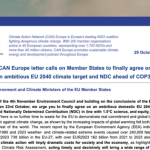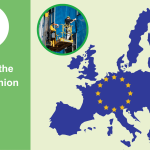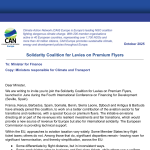
Dear Commissioner Simson, Executive Vice-President Šefčovič, Commissioner Hoekstra, and Commissioner
Sinkevičius
Monday 18 March 2024
We, the undersigned organisations, are writing regarding the guidance on designating renewables acceleration areas to drive harmonised, fair, and sustainable implementation of the Renewable Energy Directive (RED).
Renewables Acceleration Areas (RAAs), focusing on solar and wind energy deployment, can be a game changer for meeting EU and global climate and energy goals, if implemented in a clear, inclusive, and comprehensive way. For this reason, we welcome the forthcoming publication of the European Commission Guidance as a step towards the implementation of RAAs as part of ecosystem-based and community-inclusive spatial planning for renewable energy deployment. Planning processes must be seen as an opportunity to deliver the necessary renewable energy capacities and infrastructure while contributing to efforts to address the biodiversity loss crisis.
This Guidance should help guide efficient implementation and support the national public authorities mandated to identify and select potential acceleration areas. A good selection and designation process, centred on good governance, stakeholder and public participation, has the potential to minimise impacts on nature and improve public and stakeholder confidence, and thereby prevent lengthy and costly conflicts which significantly delay developments. A common methodological approach can guide Member States in the selection and designation of necessary and suitable areas for renewable energy and infrastructure development in general, and RAAs in particular, to ensure speed, consistency, efficiency, and fairness in the process.
As a matter of priority, we therefore believe the Guidance should include the following:
1. The selection and designation process should follow credible, science-based methodologies taking into account, inter alia, technology-specific energy modelling, wildlife sensitivity mapping and socio-ecological land use indicators. The process should be as comprehensive as possible, drawing in experts from relevant fields and departments, and taking into account important variables, such as priority habitats and migratory species. Artificial areas, multiple use areas and areas with low environmental sensitivity, such as brownfield areas and degraded lands (unless already designated for nature restoration and/or for carbon sequestration) should be identified and prioritised, creating opportunities for investment and regeneration in the selected areas. While the natural, socio-economic, and administrative contexts vary across the EU, this does not limit the adoption of commonly recognised methodological steps for renewables siting. The designation of RAAs and the drafting of the Nature Restoration Plans should be done in a mutually coherent and synergetic way.
2. The Guidance should provide clear and explicit guidelines on the public participation process for the designation of RAAs that will help Member States ensure they have thorough, effective, and inclusive processes that comply with existing legislative requirements*.
Local communities, residents, and stakeholders should have the opportunity to contribute upfront, and benefit downstream. A robust, early-stage public participation strategy -including identification of the required capacity- can help enhance local buy-in, as well as provide the opportunity to collect valuable data for developers to identify potential difficulties, optimise design, and propose mitigation measures to address residual conflicts. Engaging communities and stakeholders from the outset would foster preemptive collaboration, minimising the risk of legal objections before national courts, as well as establishing a solid foundation for smoother and community inclusive project development.
3. The Guidance should draw from best practice examples from across Europe to include examples of lower sensitivity areas for social and environmental impact, where successful renewables development has gone ahead and which could form a suitable basis for RAAs. It is important that the Guidance underlines how certain hurdles were overcome in these examples, such as relevant datasets being publicly accessible, as well as replicable methodologies for deployment on the lowest impact areas, such as brownfields, artificial and industrial structures.
4. For offshore renewable energy, RAAs should be based on the areas already designated for offshore renewable energy in national Maritime Spatial Plans (MSP), unless they overlap with Marine Protected Areas (MPAs). Where Member States have yet to finalise and submit their MSP and where the designation of additional areas may be needed to reach the 2030 renewable energy target, their designation should follow an ecosystem- based approach.
5. Robust periodic monitoring and review processes of the designation and implementation of RAAs and spatial mapping should be undertaken to ensure Member States are equipped and supported, notably in terms of administrative workforce, to deliver quality output within the deadlines set by the Renewable Energy Directive, while minimising impacts on nature and ensuring public participation and benefits for the local communities.
We thank you for your attention to this matter and would welcome the opportunity to further discuss these recommendations with you and your services ahead of the publication of the Guidance.
Yours sincerely,
Ester Asin,
Director WWF European Policy Office, on behalf of WWF EPO, BirdLife Europe & Central Asia,
The Nature Conservancy, CAN Europe, and the European Environmental Bureau.
*As per art. 15d RED, compliance with Art. 6 Directive 2001/42/EC on the assessment of the effects of certain plans and programmes on the environment (SEA Directive) must be ensured. The respect of the UNECE Convention on Access to Information, Public Participation in Decision-making and Access to Justice in Environmental Matters (Aarhus Convention) is also key to prevent plans from being delayed due to court appeals.
Full Letter: Joint NGO letter on the European Commission Guidance on Renewables Acceleration Areas



